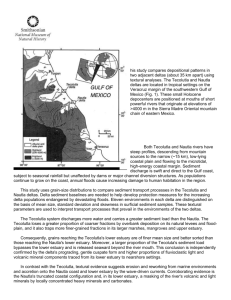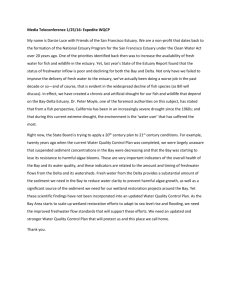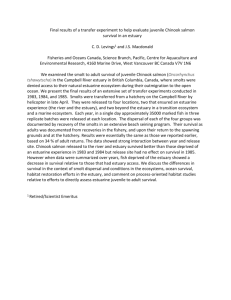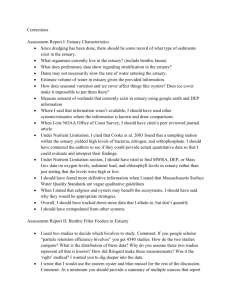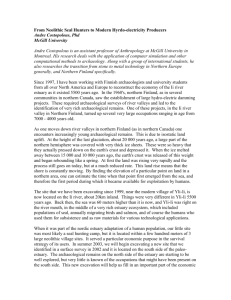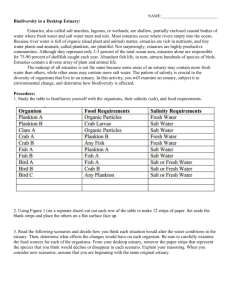Chapter 10 - Raleigh Charter High School
advertisement
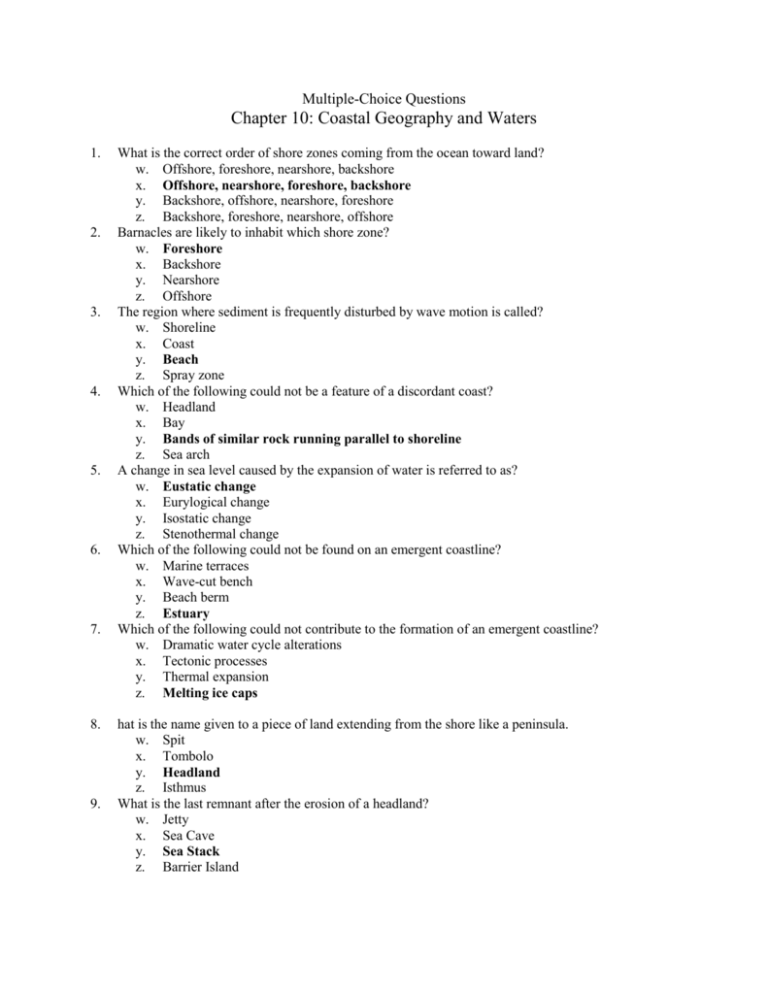
Multiple-Choice Questions Chapter 10: Coastal Geography and Waters 1. 2. 3. 4. 5. 6. 7. 8. 9. What is the correct order of shore zones coming from the ocean toward land? w. Offshore, foreshore, nearshore, backshore x. Offshore, nearshore, foreshore, backshore y. Backshore, offshore, nearshore, foreshore z. Backshore, foreshore, nearshore, offshore Barnacles are likely to inhabit which shore zone? w. Foreshore x. Backshore y. Nearshore z. Offshore The region where sediment is frequently disturbed by wave motion is called? w. Shoreline x. Coast y. Beach z. Spray zone Which of the following could not be a feature of a discordant coast? w. Headland x. Bay y. Bands of similar rock running parallel to shoreline z. Sea arch A change in sea level caused by the expansion of water is referred to as? w. Eustatic change x. Eurylogical change y. Isostatic change z. Stenothermal change Which of the following could not be found on an emergent coastline? w. Marine terraces x. Wave-cut bench y. Beach berm z. Estuary Which of the following could not contribute to the formation of an emergent coastline? w. Dramatic water cycle alterations x. Tectonic processes y. Thermal expansion z. Melting ice caps hat is the name given to a piece of land extending from the shore like a peninsula. w. Spit x. Tombolo y. Headland z. Isthmus What is the last remnant after the erosion of a headland? w. Jetty x. Sea Cave y. Sea Stack z. Barrier Island 10. Name the type of feature created when waves drill all the way through a headland creating openings on both sides. w. Stump x. Sea cave y. Sea arch z. Sea stack 11. What type of headland is characterized by its long and narrow length? w. Capes x. Promontory y. Peninsulas z. Narrow Spits 12. Submergent coastlines are characterized by all the following except w. Long periods of erosion x. Rising sea levels y. Areas of sediment deposition z. Active tectonic plate movements 13. Who developed the classification of primary and secondary coasts? w. Cook x. Watson y. Wegner z. Shephard 14. Which of the following is not a primary coast? w. Marine deposition coast x. Volcanic coast y. Alluvial plain z. Drowned glacial valley coast 15. Which of the following correctly describes secondary coasts? w. Formed by marine processes, usually young x. Formed by marine processes, usually old y. Formed by non-marine processes, usually young z. Formed by non-marine processes, usually old 16. What is the term for large rocks which are on the beach due to high levels of erosion? w. Jetties x. Groins y. Lag deposits z. Bay barriers 17. What are two characteristics of marine deposition coasts such as the US Atlantic Coast? w. Sandy beaches and spits x. Lag deposits and marshes y. Alluvial planes and volcanism z. Rocky beaches and tombolos 18. Which of the following is not a type of secondary coast? w. Wave erosion coast x. Marine deposition coast y. Biological coast z. Volcanic crust 19. Which of the following describes an estuary that is formed by an ocean invading a river valley? w. Coastal plain estuary x. Fjord y. Bar-built estuary z. Tectonic estuary 20. Which of the following describes an estuary that is formed by faulting or folding? w. Coastal plain estuary x. Fjord y. Bar-built estuary z. Tectonic estuary 21. Which of the following describes an estuary that is separated from the ocean by a barrier island or other sand structure? w. Coastal plain estuary x. Fjord y. Bar-built estuary z. Tectonic estuary 22. In which type of estuary does the upper layer have a horizontal gradient from head to mouth? w. Slightly stratified x. Highly stratified y. Salt wedge z. X and y 23. In which type of estuary does a prominent halocline exist? w. Slightly stratified x. Highly stratified y. Salt wedge z. X and y 24. What are marginal seas? w. Estuaries that are less than 5 meters deep x. Glaciers that are large enough to bring about flooding when they melt y. Areas of the ocean where depth is less than 1/7 of wavelength z. Large bodies of water loosely connected to the ocean 25. Which of the following marginal seas is located by the North Atlantic between Alaska, Russia, and Aleutian Islands? w. Red Sea x. Bering Sea y. Bay of Bengal z. Caspian Sea

